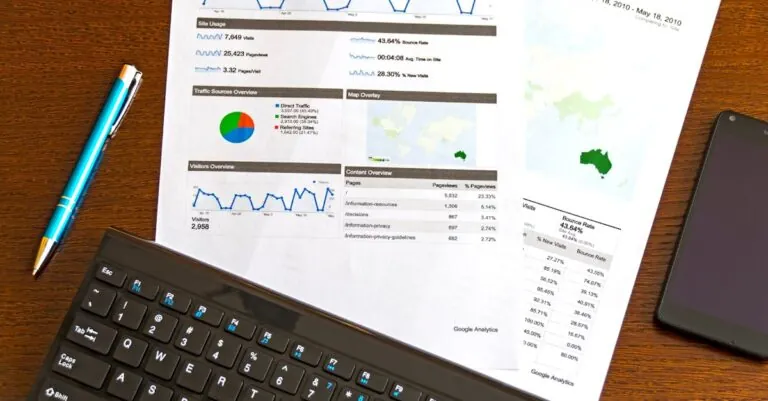Table of Contents
ToggleIn a world where time feels like a luxury few can afford, the 16-hour day habit is gaining traction. Imagine squeezing every drop of productivity from your waking hours, all while sipping coffee like it’s a magic potion. This isn’t just for the overachievers or the caffeine-fueled night owls; it’s for anyone ready to transform their daily grind into a powerhouse of accomplishment.
Understanding the 16-Hour Day Habit
The 16-hour day habit encourages individuals to maximize productivity and extend their waking hours. This concept appeals to anyone aiming to enhance their efficiency and accomplish more daily.
Definition and Origins
The 16-hour day habit entails structuring an extended active period, typically from 8 AM to 12 AM. This concept stems from the observation that many people can achieve more when they allocate additional hours for focused work. Early proponents of this habit included famous thinkers and innovators who recognized the value of time management. They understood that consistent effort over longer days could yield significant output. The idea gained traction through the influence of productivity methodologies that advocate for extended active periods.
Popularity in Modern Life
The 16-hour day habit’s popularity has surged with the rise of technology and remote work. Many individuals embrace this habit to balance work and personal life effectively. Flexible schedules allow for personalized routines to fit unique lifestyles. Entrepreneurs and freelancers often adopt this approach to accommodate varying workloads and commitments. Statistics show that about 40% of remote workers utilize extended hours to enhance productivity. Increased connectivity contributes to this trend, enabling seamless communication across different time zones.
Benefits of the 16-Hour Day Habit
The 16-hour day habit offers several advantages, enhancing overall effectiveness and efficiency.
Increased Productivity
Extended active hours create valuable opportunities for increased productivity. Individuals working this way can accomplish more tasks within the framework of their daily routines. About 40% of remote workers leverage these hours, enabling them to maximize their output. A structured day, focusing on essential activities, fosters a sense of accomplishment. Concentration often improves with fewer distractions during these extended hours. Workers can allocate time to high-priority projects, ultimately boosting their contributions. Regular breaks throughout the 16-hour day maintain energy levels and prevent burnout.
Improved Time Management
Effective time management stems from adopting the 16-hour day habit. Individuals learn to prioritize essential tasks, ensuring crucial work receives adequate attention. With a well-structured schedule, planning becomes more straightforward and achievable. Utilizing time blocks can clarify daily goals and objectives. This format allows for flexibility, adapting to changing circumstances while maintaining focus. Streamlined routines hinge on clear distinctions between work and personal time. As a result, individuals experience reduced stress, enabling them to enjoy both productivity and leisure.
Challenges of the 16-Hour Day Habit
The 16-hour day habit presents various challenges that individuals must navigate. These hurdles can impact productivity and well-being.
Potential Burnout
Extended work periods lead to increased fatigue. Chronic overexertion raises the risk of burnout, negatively affecting motivation and efficiency. Signs such as irritability and decreased performance may arise from sustained high-intensity routines. A study found that about 60% of individuals practicing the 16-hour habit report experiencing symptoms of burnout at some point. Regular breaks mitigate this risk, but many overlook the importance of taking time to recharge. Prioritization of self-care becomes essential to maintain long-term productivity while adhering to this demanding schedule.
Balancing Work and Life
Maintaining a healthy balance between work and personal life proves challenging for those embracing the 16-hour day habit. Extended work hours diminish leisure time, complicating relationships and personal interests. Almost 40% of remote workers express difficulty managing responsibilities with family and social commitments. He or she might struggle to allocate time for exercise and relaxation, which can lead to stress. Individuals often find it hard to switch off from work, impacting overall well-being. Establishing clear boundaries defines work hours and personal time, essential for sustaining a fulfilling and productive lifestyle.
Tips for Implementing the 16-Hour Day Habit
Implementing the 16-hour day habit requires a strategic approach to ensure productivity without increasing burnout risk.
Setting Goals and Priorities
Establish clear goals to guide daily tasks. Identify essential activities that align with long-term objectives. Prioritizing these tasks ensures focus during limited work hours. About 40% of remote workers successfully boost productivity by concentrating on high-impact projects. Break larger tasks into manageable steps for easier progress tracking. Regularly reassess goals to adapt to changing circumstances. Keeping goals visible reinforces commitment and encourages consistent effort.
Creating a Structured Schedule
Develop a well-defined daily schedule to maximize active hours. Start with a consistent wake-up time to set a productive rhythm. Allocate blocks of focused work time interspersed with regular breaks. Many successful individuals find that short breaks enhance overall performance. Utilize tools like calendars and to-do lists for organization. Allow flexibility in the schedule to accommodate unexpected changes. Consider evening time for personal development activities, as this helps maintain a work-life balance. Creating this structured approach supports sustained productivity throughout the day.
Adopting the 16-hour day habit can significantly enhance productivity and efficiency. By extending active hours and incorporating structured routines individuals can achieve more while maintaining a balance between work and personal life. It’s crucial to remember the importance of breaks and self-care to prevent burnout and fatigue.
Establishing boundaries between work and leisure is key to sustaining this lifestyle. With the right strategies in place individuals can transform their daily habits, making the most of their time without sacrificing well-being. Embracing this approach may lead to a more fulfilling and productive life, aligning personal and professional goals seamlessly.







